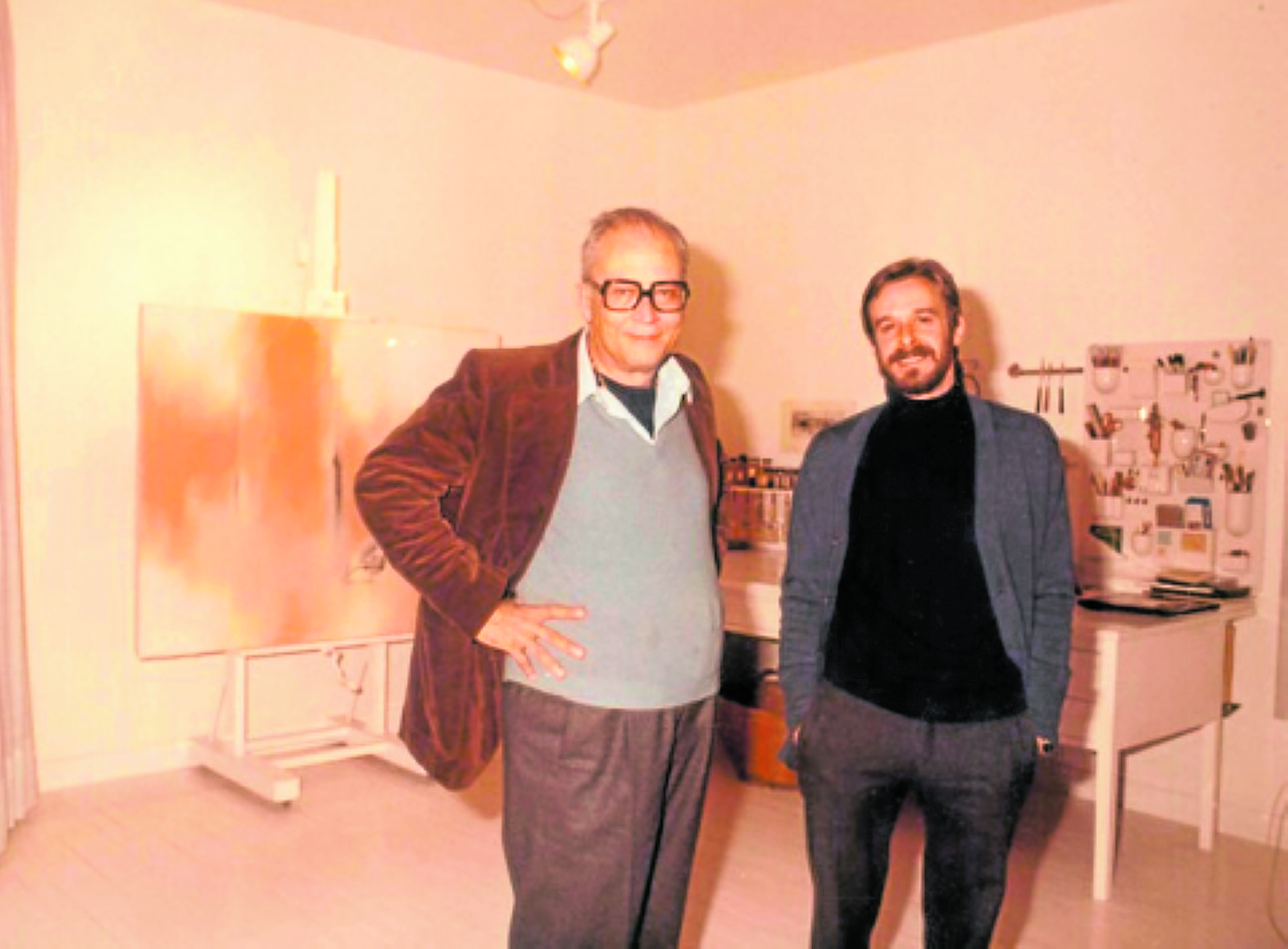
Riding in his Mercedes Benz between his adopted hometown Cuenca and Madrid, Spanish Filipino master Fernando Zóbel would marvel at the countryside. His impressions eventually referenced the landscape in a series of quiet canvases, among them, “Taranchon, Gasolinera.”
Painted in 1971, it was suggestive of a gasoline station in Tarancón, Cuenca, at sunset, rendered in soft washes of orange and peach and rectangular quadrants. Though known for his black and white series, Zóbel took a departure in the 1970s and experimented with subtle colors.
As part of the Art Fair, León Gallery International has mounted “Fernando Zóbel: The 1970s,” which runs through March 28.
The curator, Adolfo Cayón, director of Galería Cayón in Madrid, explained that the exhibit aims to reveal Zóbel’s range of style and erudition.
“Zóbel had two things all his life: structure—in which you see horizontal and vertical lines—and color,” he said.
From black to white
Zóbel was born in 1934 in Manila to tycoon Enrique Zóbel and Fermina Montojo.
Zóbel returned to the Philippines in the ’50s, leading a double life as an executive at the family-owned Ayala Corp. and an artist/cognoscenti. Between jobs, he became an artist in residence at Rhode Island Institute of Design, where Mark Rothko’s exhibit drove him to venture into abstraction from figurative studies.
He then experimented with the syringe to produce refined lines, a defining characteristic of his “Saeta” series, playing against seamlessly controlled backgrounds of color. Zóbel was likewise associated with “Serie Negra (Black Series)” which he described as “a large white background, used solely to highlight a relatively small but intense area of black graphics.”
In the ’70s, he returned to color through abstractions on scenery, music and art that were imbued with soft tints.
At the opening, Cayón showed how “Pequeño Homenaje a Stravinsky (Small Homage to Stravinsky, 1972)” suggested the similarities of structure between painting and musical notation.
“Estudio Sobre Basquenis (Study on Basquenis, 1975)” referenced the subtle geometry of the portraits by Italian Baroque artist Evaristo Baschenis. “El Triunfo del Cesar” captured the essence of Renaissance painter Andrea Mantegna’s series, “Chariot of Ceasar.”
Right-hand man
The catalog cited that it was also in the early ’70s that Zóbel took a detour from color to the “Seria Blanca (White Series).” He eschewed colors for subtle contrasts of lightness and darkness and play of space.
The exhibit likewise honors Rafael Perez-Madero, Zóbel’s executive assistant, adviser and toughest critic. He met him through a common friend and hired him from 1967 until Zóbel’s death in 1984 of a heart attack at 60.
The public would not have known the gravitas of Zóbel were it not for Perez-Madero’s efforts, mounting a retrospective exhibit at Museum Reina Sofia in Madrid and curating his monography in 2003. Perez-Madero died in 2017 at the age of 71.
Zóbel was sometimes wrongly classified as an abstract expressionist. Perez-Madero believed that his paintings were intellectual and conceptualized.
“My own sort of thing is pretty far removed from visceral expression. The fact is that I really don’t improvise very well. I can’t seem to express myself without first taking thought,” said Zóbel to Perez-Madero.
Despite the artist’s different phases, Perez-Madero noted that his paintings were ultimately meditative and harmonious.
“Zóbel didn’t follow the mainstream, which was more gestural back then,” said Cayón, referring to the era of the action painting or the impulsive and unconstrained brushworks. “He was an intellectual. A good artist is like an island that would soon be discovered by others. Nobody else painted like him.”